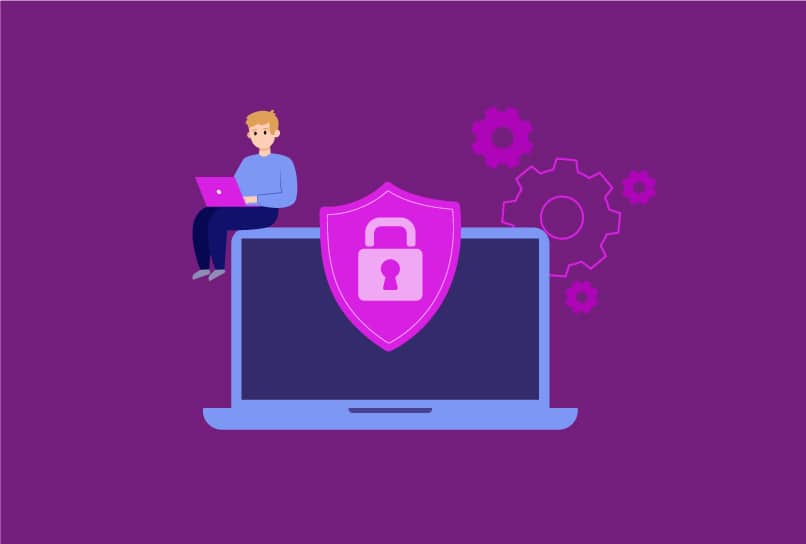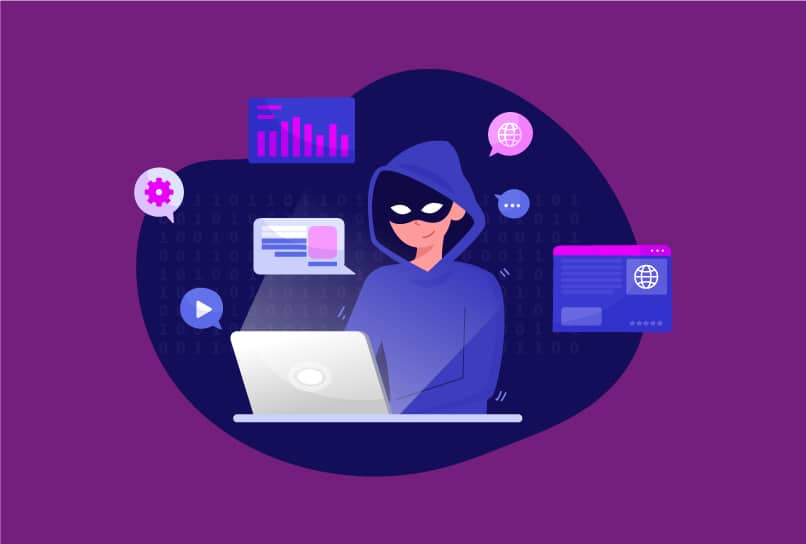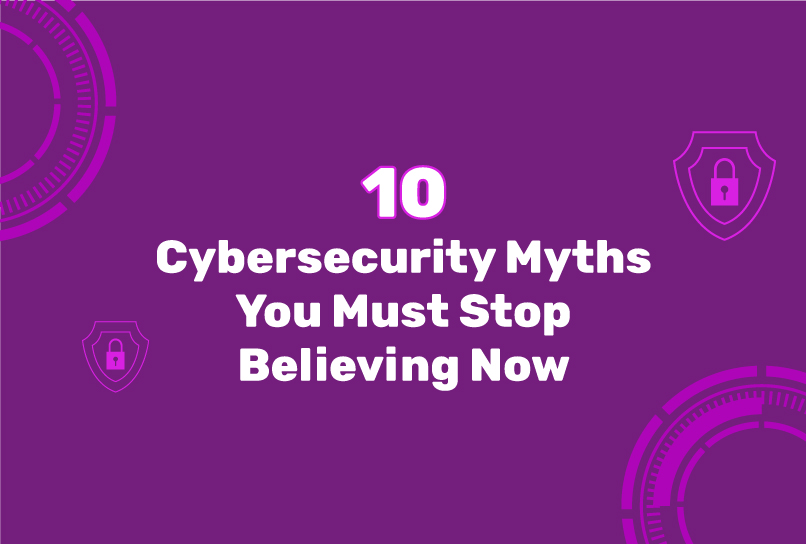Cybersecurity is complex and ever-evolving. The rules of the game are in constant flux, thus, it is difficult to keep up with the latest best practices as new threats emerge.
Consequently, many myths about cybersecurity have emerged, leading individuals down the treacherous path of ill-informed choices that leave their data vulnerable to lurking cyber threats.
In this article, we will debunk 10 dangerous cybersecurity myths and explain why it is crucial to abandon these misconceptions immediately. But just before we get started with the myths, let’s do a brief overview of what cybersecurity is all about.
What is Cybersecurity and Why is it Necessary?
According to Cisco, Cybersecurity is simply the practice of protecting critical systems and sensitive information from digital attacks. These digital attacks, or cyberattacks, are usually aimed at accessing, changing, or destroying data; extorting money from users or the organization, and disrupting business operations.
At its core, cybersecurity involves multiple layers of defense against attacks; it includes preventive measures, threat detection, incident response, and recovery. The ultimate objective of cybersecurity measures is to ensure the confidentiality, integrity, and availability of digital assets.
The importance of cybersecurity cannot be overstated, given the prevalence and increasing sophistication of cyber threats. Hackers, cybercriminals, and state-sponsored actors continuously evolve their tactics; they are always seeking new vulnerabilities to exploit and using innovative methods to do so.
The consequences of successful cyber attacks are devastating and wide-ranging. It may include significant financial losses, reputational damage, compromised privacy, or even physical harm.
Why is Cybersecurity Important?
Cybersecurity matters because it prevents data breaches, identity theft, cyber extortion, and other malicious activities that can harm individuals, businesses, and society.
Here are five key reasons why cybersecurity is necessary:
- Protection of Sensitive Data. A huge part of modern life is built on different kinds of data, most of which are sensitive. These data include personal information, financial records, and intellectual property. Cybersecurity measures are necessary to protect this data from unauthorized access, theft, and misuse.
- Mitigation of Economic and Personal Impacts. Cyber attacks can have severe economic and personal consequences. Financial losses, reputational damage, compromised privacy, and even physical harm can result from successful cyber attacks.
Implementing robust cybersecurity measures helps mitigate these risks and protects individuals and organizations from the far-reaching impacts of cyber threats.
- Preservation of Business Operations. Businesses and organizations rely heavily on digital infrastructure to conduct their operations. Cyber attacks can disrupt services, compromise customer data, and cause financial losses. Cybersecurity ensures the integrity and availability of systems, safeguarding business continuity and maintaining customer trust.
- Safeguarding Critical Infrastructure. Today, power grids, transportation systems, healthcare facilities, and government institutions all depend on interconnected networks to function efficiently. Cybersecurity is crucial to protect these critical infrastructures from cyber attacks that could lead to disruptions, endanger lives, and compromise essential services.
- National Security. Cybersecurity is vital in protecting a nation’s interests in today’s world. Governments and defense agencies must defend their networks and systems from state-sponsored cyber espionage, sabotage, and potential attacks on critical infrastructure.
A nation that can’t protect its sensitive military information and intelligence data is heading for both internal and external chaos.
The 10 Cybersecurity Myths Debunked

Now that we understand the importance of cybersecurity, let’s debunk ten common myths that can undermine our efforts to stay secure:
Myth 1: “All websites with a Padlock icon are safe and trustworthy.”
Reality: While the padlock icon (or “https://” prefix) indicates that a website has an SSL certificate and your connection to the site is encrypted – preventing most middlemen attacks, it certainly doesn’t guarantee a website’s legitimacy.
Adversaries can still obtain SSL certificates for malicious purposes, or create deceptive websites that mimic legitimate ones. It’s a fairly simple process.
Hence, as a user, you should always be cautious, and consider other verification methods, such as researching the website on search engines to confirm its authenticity and reputation, before sharing sensitive information or engaging in transactions on an unfamiliar website.
Myth 2: “Only large businesses are targeted by cybercriminals.”
Reality: No matter how small or large your business or organization is, you are a potential target for cyberattacks. Hackers do not discriminate based on size or industry; they look for vulnerabilities and opportunities to exploit them.
Small business owners who say, “I can’t afford to invest in cybersecurity” or “I don’t need to worry about cybersecurity because my company is too small” are also doing themselves harm. According to a report by Verizon, 43% of cyberattacks in 2019 targeted small businesses. Small businesses are often targeted by hackers because they’re seen as being less likely to have robust security measures in place.
In fact, small businesses are more likely to be hacked than large businesses. And the cost of a data breach can be devastating, both financially and reputationally. In fact, the average cost of a data breach in the United States is now over $4 million.
Cybersecurity is not a luxury; it is an investment that can save you money and trouble in the long run.
Myth 3: “Cybersecurity is a one-time thing.”
Reality: Given the complexity and ever-evolving nature of cyber threats, cybersecurity must be an ongoing endeavor. You cannot just set it and forget it; you have to constantly monitor, update and improve your cybersecurity measures to keep up with the changing threat landscape.
Cyberattacks are becoming more sophisticated and frequent every day, and new vulnerabilities and exploits are discovered regularly.
Therefore, you have to stay vigilant and proactive about your cybersecurity and not rely on outdated or ineffective solutions. Cybersecurity is not a one-time thing; it is a habit that requires constant attention and adaptation.
Myth 4: “My antivirus software will protect me from all cyberattacks.”
Reality: Antivirus software is an important part of any cybersecurity strategy, but it’s not enough on its own– it is only one layer of defense against cyberattacks. Antivirus software can only protect you from known threats. New threats are being created all the time, so it’s important to have a layered security approach that includes things like firewalls, intrusion detection systems, and security awareness training.
Some people extend this myth and say, “I don’t have to worry about cybersecurity because I’m careful about what I click on.” Even if you’re careful about what you click on, you’re still at risk. Hackers are getting more sophisticated in their attacks, and they can now exploit vulnerabilities in your browser or operating system without you even clicking on anything.
Myth 5: “My Strong passwords are enough to secure my accounts.”
Reality: Strong passwords are important, but they are not enough to secure your accounts. Mathematically, there is a limit to the number of password combinations possible. Attackers recognize this and use sophisticated computers to keep guessing which combination would unlock their victim’s account.
Increasing the length of a password and adding special characters make the process a bit more complex, but exponentially safer.
Also, If you reuse a single ‘strong password’ for multiple accounts, you have made yourself extremely vulnerable to attackers.
Myth 6: “Mobile apps from the official App stores are always safe”
Reality: Mobile apps from official app stores are not always safe. According to Asseco SEE, 25% of the 2 million apps available on Google Play alone have a security issue. There have been cases of malicious apps (this is a recent list of some of these kinds of apps) found on official app stores. These apps conceal their dangerous components and avoid the stringent vetting methods used by app stores.
So, it is important to be careful about which apps you install on your phone, even if they are from a trusted source.
Mobile devices in general are also vulnerable to cyber threats, such as malware and phishing attacks. Be sure to use a security app on your phone and keep your operating system and apps up to date.
Myth 7: “Only clicking on suspicious links can lead to malware infections.”
Reality: Your devices can get infected with malware even if you do not click on a suspicious link. Malware can be installed on your device via various means. It can be through drive-by downloads— downloads that occur automatically without your knowledge or consent.
Mail attachments can also be possible sources of malware. Your device can also get infected via the physical transfer of malicious files on USB sticks or storage drives.
Myth 8: “Public Wi-Fi with a password is safe to use.”
Reality: Public Wi-Fi with a password/passkey is not safe to use. Even if the network is password-protected, it is still possible for hackers to intercept your data. If you must use public Wi-Fi, be sure to use a VPN to encrypt your traffic.
Myth 9: “Phishing attacks are easy to spot.”
Reality: Phishing attacks are designed to look as real as possible. Victims often receive emails or messages that look legitimate. And with the frequent advancements of ease of replicating UI designs, the inconsistencies can be very difficult to spot, even for experienced users.
Thus, if you are unsure of the sender of an email or message asking for personal information, it is better to ignore it. You would probably be doing yourself a favor.
Myth 10: “Incognito mode provides complete privacy.”
Reality: Incognito mode, also known as Private mode on some browsers, does not provide complete privacy — it only hides your browsing history from other users of the same device. Your ISP and the websites you visit can still track your browsing activity and identify you via Internet Traffic Monitoring and browser fingerprinting respectively. But there’s an easy solution to that.
While Incognito mode does not offer complete privacy, using Incogniton, the anti-detect browser, provides you with advanced privacy protection.
By leveraging features like IP address masking, user-agent spoofing, cookie and cache management, and anti-fingerprinting techniques, Incogniton provides robust protection against tracking by your ISP and the websites you visit. These measures effectively limit the amount of real data accessible to them, ensuring a higher level of privacy during your browsing sessions.
Common Types of Cyber Attacks

Cyber attacks can be conducted in several ways. You must be aware of the tricks malicious agents use to conduct these attacks because that’s how you can prevent yourself from being a victim. Some of the common ones are explained below.
- Identity theft: Cyber attacks involving identity theft aim to steal a person’s personal information, such as Social Security numbers or credit card details. Attackers can misuse this information to create fraudulent accounts, make unauthorized purchases, or engage in other criminal activities using the victim’s identity.
- Viruses and malware: Malware refers to malicious software that can harm computer systems. It can infect a system when users unknowingly click on harmful links, open infected attachments, or download files from untrustworthy sources. Once installed, malware can steal sensitive data, corrupt files, or gain control over the compromised system.
- Phishing scams: Phishing attacks deceive users into revealing their personal information, like passwords or credit card numbers. Attackers often send deceptive emails that appear to be from legitimate sources, such as banks or credit card companies.
These emails typically contain links that direct users to fake websites resembling genuine ones. When users enter their personal information on these fake websites, the attackers can easily steal it.
- Cyberbullying: Cyberbullying involves the use of electronic communication to intimidate, threaten, or harass others. It commonly occurs through social media platforms, emails, text messages, or any other form of online communication. Cyberbullies send intimidating messages that can cause emotional distress and harm to their victims.
How to Overcome Cybersecurity Myths
The best way to overcome cybersecurity myths is to educate yourself about the risks and how to protect yourself. Don’t join people who say, “I don’t have time to learn about cybersecurity.”
There are many things you can do to protect yourself from cyberattacks, such as using strong passwords, being careful about what links you click on, and keeping your software up to date. You just have to be willing to learn.
By being aware of the risks and taking steps to mitigate them, you can make it much more difficult for cybercriminals to succeed.
There are also many resources available online and in libraries that can help you learn about cybersecurity. You can also talk to your IT department or a security professional for more specific advice.
However, here are some general tips for staying safe online and not falling victim to cyber security myths.
1. Be Skeptical of Unsolicited Emails.
Be cautious when you receive emails from unknown senders or those that seem suspicious. Avoid clicking on any links or downloading attachments from such emails, as they may contain malware or lead you to fraudulent websites.
In addition to staying vigilant, leveraging the power of an anti-detect browser like Incogniton can further enhance your protection here as well. With their anti-fingerprinting capabilities, an anti-detect browser prevents websites from tracking and accessing your contact info without your consent. That way, you can significantly reduce the frequency of unsolicited emails you receive.
2. Keep Your Software Up To Date.
Update your operating system, web browsers, and other software applications regularly to ensure you have the latest security patches. Enable automatic updates whenever possible to stay protected against known vulnerabilities.
Outdated software can be exploited by cybercriminals to gain unauthorized access to your system, so staying updated is crucial.
3. Use Strong Passwords and Multi-Factor Authentication
Use strong passwords, and don’t reuse them across multiple accounts. Also, change them regularly, especially if you suspect any account compromise. Avoid using easily guessable information, such as your name or birthdate, in your passwords.
According to Microsoft, a good password is at least eight characters long, does not contain a complete word, and contains symbols as well as numbers.
You can also use password managers to securely store and generate strong passwords for your different accounts. Sometimes, keeping track of your passwords can be so hard. A password manager will save you that stress and still help you stay safe.
In addition to using strong passwords, you should use two-factor authentication (2FA) whenever possible. 2FA adds an extra layer of security to your account by requiring you to enter a code from your phone in addition to your password.
4. Be Careful About What Information You Share Online.
Think twice before posting personal details, such as your full name, address, phone number, or financial information, on social media or public websites. What you share, in online forums, chats, or public discussions, is accessible to anyone on the internet who cares to search, and you never can tell those who have malicious intent.
You can also adjust privacy settings on social media platforms to control who can see your personal information.
5. Use Multiple Layers of Cybersecurity Solutions.
There are many tools and services available that can help you with cybersecurity. Firewalls, antivirus software, VPNs, cloud storage, encryption, and an antidetect browser are examples. A firewall will help to block unauthorized access to your computer, while antivirus software can help to protect your computer from malware.
Using an anti-detect browser (e.g. Incogniton) lets you surf the internet anonymously, and we recommend it. Also, there is usually a built-in firewall on your operating system; you should enable it or consider using a third-party firewall. The same thing goes for antivirus software.
By implementing these practices, you can significantly enhance your online safety and reduce the risk of falling victim to cyber threats. Your best bet, once again, is to stay informed about evolving cybersecurity best practices and maintain a cautious approach while navigating the digital landscape.
Conclusion — Seeking the facts and shielding your digital fortress
Cybersecurity is not merely a buzzword or an optional measure today. It is a critical discipline that underpins the security, privacy, and trust we place in our digital interactions and transactions. Hence, while ignorance may pose risks, the proliferation of myths and misinformation is 10x more dangerous.
To protect yourself, ensure you follow the tips discussed above, including using strong passwords and 2FA, being cautious with unsolicited emails, and employing the Incogniton anti-detect browser for when you need that additional layer of privacy to browse freely.
As stated from the start, the rules of the game are in constant flux. Thus, you need to embrace a proactive cybersecurity mindset to securely navigate the ever-evolving World Wide Web. Stay vigilant, stay informed, and steer clear of myths.
Anti-Detect Browser for Multi-Account Management
Manage unlimited virtual profiles for easy multi-account management. Safe and anonymous. Ideal for teams and individuals. Download and try for free now!
